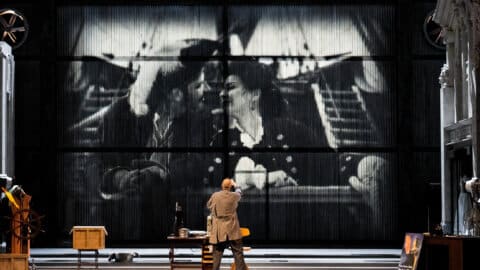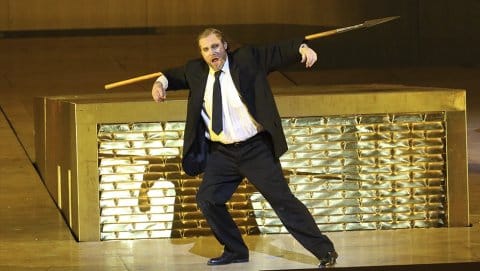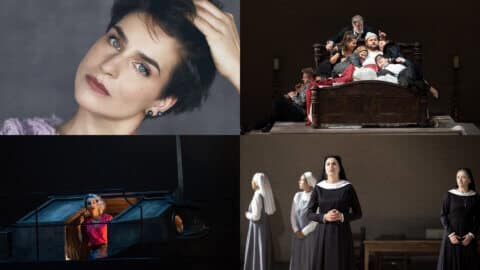SIEGFRIED • BRUXELLES
★★★★☆☆
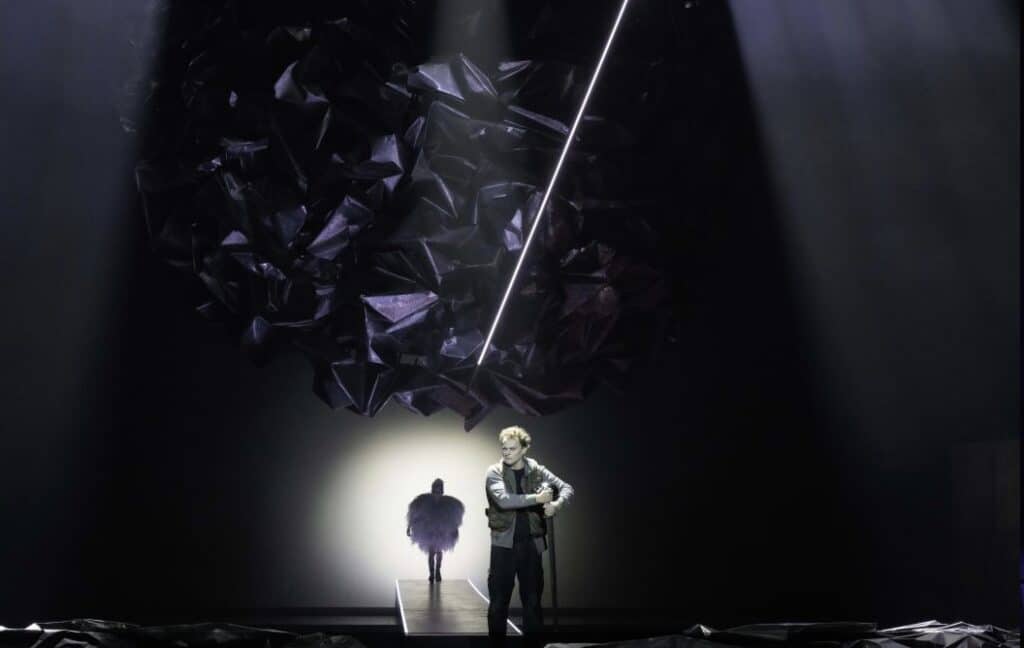
Photo: Monika Rittershaus
REVIEW SIEGFRIED AT LA MONNAIE: SCANDAL CANCELLED IN BRUSSELS
It was quite a blow when Italian star director Romeo Castellucci and La Monnaie Opera in Brussels cancelled their collaboration after the first two artistically innovative and internationally acclaimed episodes of The Brussels Ring.
Disaster loomed at the prospect that the production of parts three and four of the tetralogy, Siegfried and Götterdämmerung, would be cancelled and a major opera scandal would explode at the hands of La Monnaie management.
The reason was allegedly an incompatible relationship between the financial leeway and the towering artistic ambitions that were so emphatically fulfilled with spectacular productions of The Rheingold and The Valkyrie, both of which are premiere reviewed here on Got to see this.
Rumor has it that Castellucci wanted Siegfried produced as a full-length film and Götterdämmerung as half opera and half play.
It may sound unconventional, but anyone who’s seen a Castellucci production or two knows that conventional is not something the Italian master has much in his toolbox.
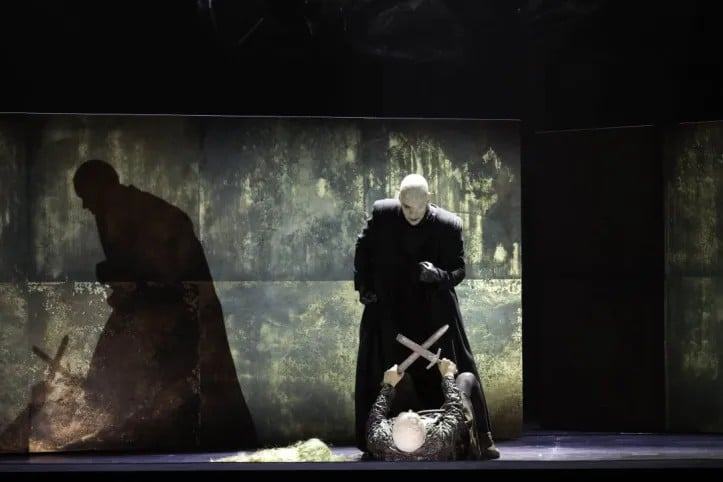
Photo: Monika Rittershaus
At short notice, the Wagner expert, French Lebanese Pierre Audi, General Director of the Aix-en-Provence Festival, experienced director and artistic director, agreed to take over with a new production team.
The premiere of Siegfried on 11 September was a manifestation of artistic professionalism and dismantled any hint of scandal.
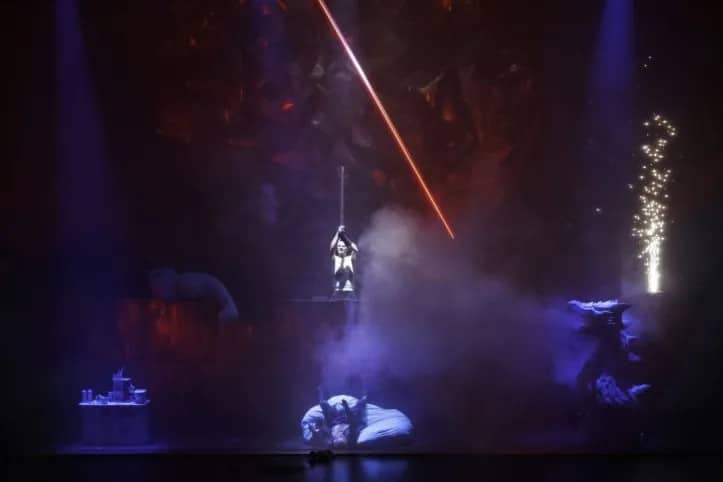
Photo: Monika Rittershaus
This is possibly the most musical-inspired Wagner interpretation I have seen, with an almost show-like, abstract but clearly legible stage design bathed in flashy lighting effects framing the story.
It is not necessarily negative that Pierre Audi refrains from Castellucci’s often wild and offbeat extemporizations but takes a more sober approach to the story and reinforces its key points.
A central visual role is played by the Notung sword, a coded phallic symbol represented as a brightly glowing streak of laser light in several variations.
It’s not unlike the lightsaber from Star Wars, just as Wotan, disguised as the Mystic Wanderer, wears a cloak that makes him look like Darth Wader.
As any Ring fan knows, the sword has its own leitmotif (a warlike descending chromatic scale). The sword was destroyed in Valkyrie, but is resurrected when Siegfried rivets it together from hidden pieces of metal.
The boy knows no fear and can defeat the dragon Fafner and secure the cursed Ring.
With dragon blood on his lips, Siegfried now understands the language of birds and is led to the cliff top where he frees Brünnhilde and love immediately blossoms.
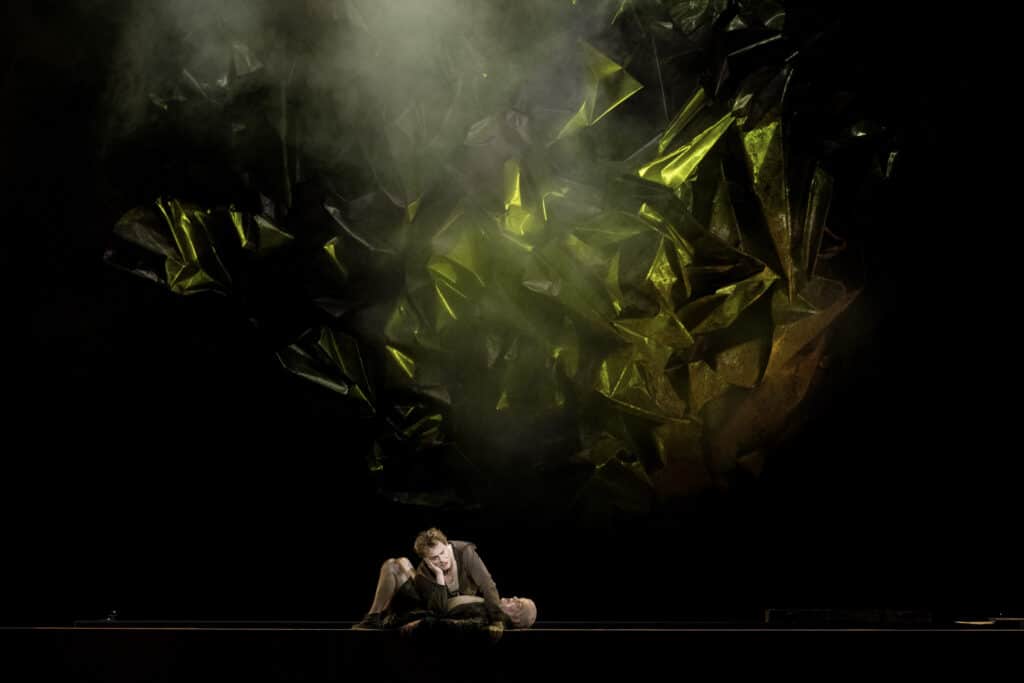
Photo: Monika Rittershaus
The dragon scene is technically impressively executed, where what was thought to be a giant meteorite on the back wall of the stage is slowly deconstructed and transformed into a fire-breathing monster in smoke and vapor.
Wagner took a 12-year break from composing Siegfried between Acts 2 and 3, instead writing The Master Songs and Tristan and Isolde.
You can actually hear that (especially if you know it). Because the last part of Siegfried falls into the slo-mo trap, just like Tristan and Isolde, where it sometimes seems like Wagner is composing more for himself than for his audience.
The smallest bit of plot development becomes endlessly long, and despite roaring orchestral playing and stellar soloists, it just becomes challenging when two soloists stand on a rock ledge and sing facing the audience for over an hour.

Photo: Monika Rittershaus
A white background with a high light in the center and some rocks hanging in the air does not make a great staging in this reviewer’s opinion. There must be better reasons for not just putting the blond, Aryan superhero Siegfried on Spotify.
The opening acts of the opera offer a more audience-friendly staging – especially with the magnificent dragon scene, followed by touching sequences with the bird that turns out to be Siegfried’s mother.
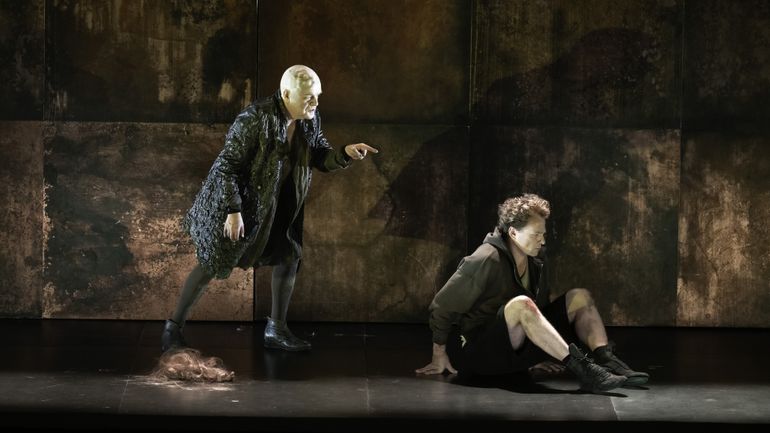
Photo: Monika Rittershaus
A surprising approachability, supported by first-class singers, with Danish tenor Magnus Vigilius earning high praise for his honest and lyrical tenor in the title role of Siegfried. His melodious voice possesses a natural simplicity that is charitably devoid of exaggeration.
Hungarian bass Gábor Bretz is a splendid Wotan with a voice that booms with authority. American Scott Hendricks again convinces with a full baritone as Alberich.
Siegfried is basically a slightly strange ‘transport’ opera with a lot of plot twists that lead us towards the inevitable doom in the final part of the Ring.
Götterdämmerung premieres at La Monnaie on 4 February 2025 and may contain a little more of the Wagnerian depth that I missed in this visually striking production, which lands on 4 stars with a high level of singers and gripping, colorful orchestral playing under the direction of star conductor Alain Altinoglu.

